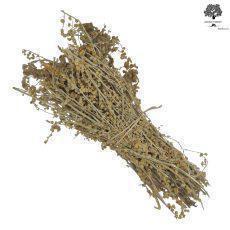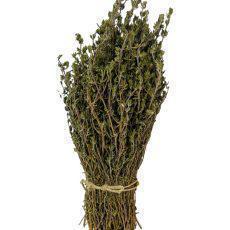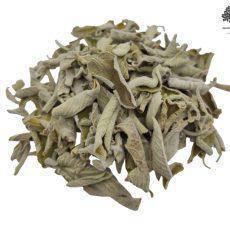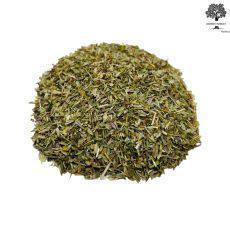Description
Name: Wormwood
Scientific name: Artemisia absinthium
Family: Artemisia
Harvest: July 2023
Expiration Date: Provided on the package
Dosage – ways to use
According to herbalists, the consumption of Artemisia should be done with great care and only under the supervision of a specialist. Its multi-day consumption may cause dizziness and headaches. The usual dosage recommended by herbalists is 10g. per day in 3 doses. The preparation of the decoction is done by boiling 10gr. Absinthe in 1 liter of water for about 15 minutes. The decoction is enough for 3 cups that can be consumed in the morning, noon and evening between meals. Artemisia is very bitter and for this reason it should be preferred to add honey to the drink.
Therapeutic properties
Known since the time of Hippocrates, wormwood is considered one of the most fragrant plants despite its bitter taste. In ancient Greece it was called Artemisia, possibly in honor of the goddess Artemis and was used in cases of amenorrhea. They believed that it strengthens memory and logic, helps with pain in muscles, joints and connective tissues, strengthens eyesight, deepens sleep.
The absinthe [lat. Artemisia absinthium], known as absinthe, savage, infidelity, stone and aquatic herb belongs to the genus Artemisia as a species of absinthe. It is a dry herbaceous herbaceous perennial plant whose height varies depending on the subspecies from 20 cm to 1.20 m. It thrives in temperate and warm countries as native to barren and rocky places.
It is characterized by an upright shoot with salaried alternates, on the contrary, slightly fragrant, leaves, silver-green, which are covered with white hairs to reduce perspiration. Its flowers are small, yellow-green in color and form small disc-shaped heads (flowers), which in turn are arranged in a fear inflorescence (botryoid inflorescence). From this complex arrangement of flowers the family got its name complex. They bloom from June to September. Their juices have a bitter taste and the main green essential oil, absinthe, is extracted from this plant. In herbal medicine the leaves are used, the flowering tops from the native wild absinthe. Shoots are collected in summer and the roots in autumn.
Wild absinthe is rich in volatile oil that contains sesquiterpene lactones (artavisin, anpsinthine), thione, azulene, flavonoids, phenolic acids, lignans. The use of Absinthe essential oil as a fragrance was abolished in the early 20th century, when it was discovered that the ingredient thujone (Thujone) in excessive doses causes damage to the nervous system and hallucinations.
It is a digestive stimulant, ie an extremely useful medicine for those who have poor digestion. It increases the acidity of the stomach and the production of bile and improves the digestion and absorption of nutrients, thus helping other diseases.
In general, the plant, in moderate doses, irritates the stomach, increases appetite, facilitates digestion, speeds up blood circulation, causes secretions, contributes to weight loss and digests fats. In healing, wormwood seeds are used. Helps digestion and weight loss. (melts fats). It has a beneficial effect on diabetics and helps fight rheumatism. It can be used to fight anemia, as an antipyretic, and has diuretic properties. Externally, it can also be used as an antiseptic.
Fresh or dried shoots repel insects and mice. Their dried leaves, when placed on clothes, repel moths. It discourages slugs and insects and is therefore used today in the manufacture of insect repellents.
The absinthe decoction is used mainly for stomach upsets, but also in cases of convulsions and epilepsy. The duration of its use should not exceed two weeks and always in small doses. It is always administered under the supervision of a specialist and never in cases of pregnancy. Excessive use can cause headaches, convulsions, miscarriage and heart disease.









